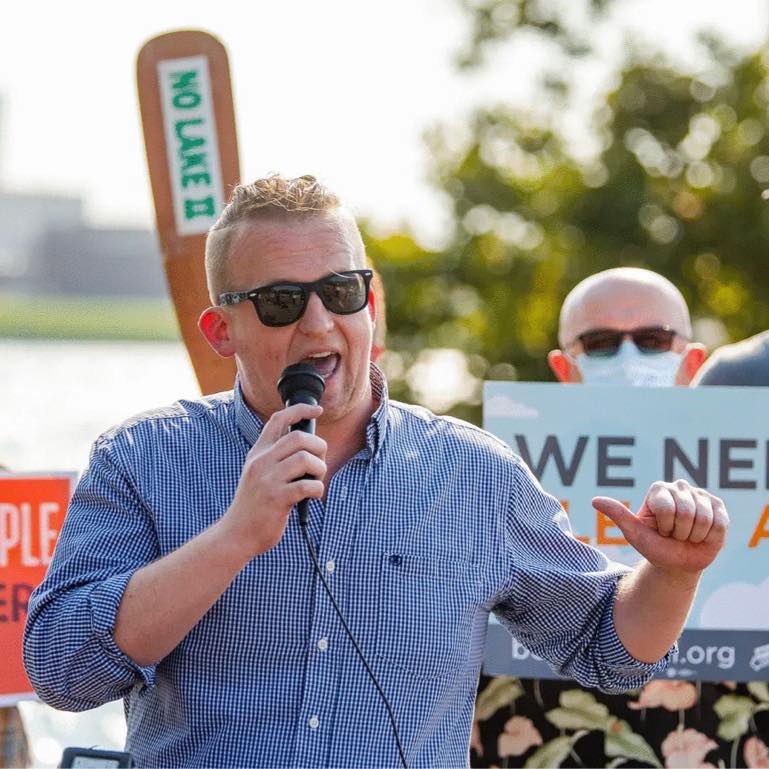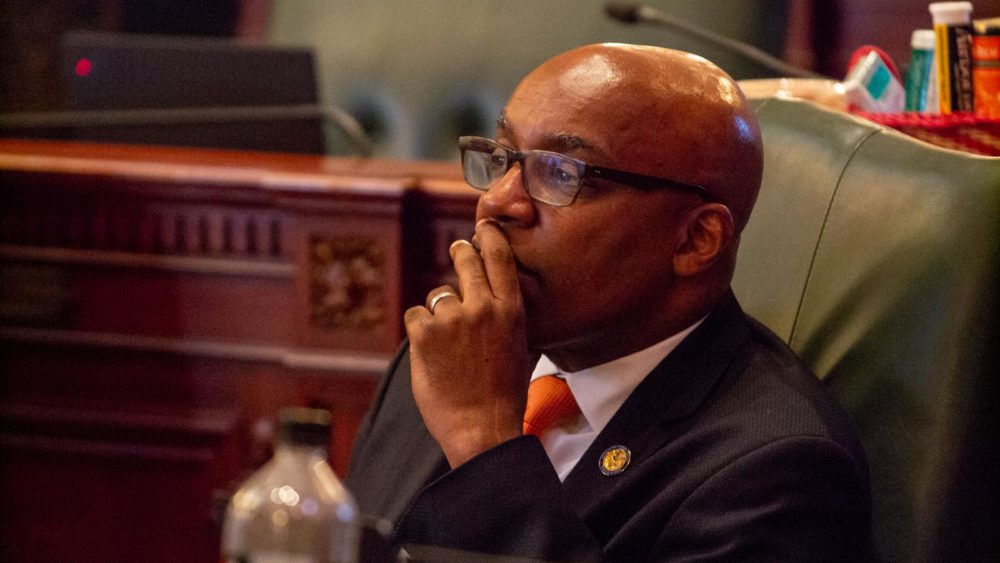Get the latest news: Subscribe Now
Homelessness is a real, human crisis. It is – particularly – a human crisis in the United States, and even here in Sangamon County and Springfield, Illinois. There are several hundred homeless individuals here in the city and across the county at present times, and far more here, across the state, and over the entire nation who are homeless by other definitions, or simply housing insecure.
With Springfield City Council’s approval of the Heartland Continuum of Care Strategic Plan to Address Homelessness, steps are being taken toward addressing those souls who require help and assistance across the city. Furthermore, with the plan funded, backed and in place, future individuals will have a better chance to stave off such unfortunate circumstances should they fall on hard times themselves; Sangamon County and Capital Township will also be supporting the initiative as well.
For Josh Sabo and Nick Dodson of the Heartland Continuum of Care, this is fantastic news to be sure – as it means that the community is taking seriously its obligation to support and help their fellow when fellow needs them most. Yet it is fantastic for – of course – those homeless and housing insecure folks across Sangamon County, as well as for all of those who live in the area. For economic reasons, as well as for moral reasons, this is an innovation that everyone across the area has really gotten behind.
WMAY’s chat with Heartland’s Director Josh Sabo was really important – and it led to some other critical work on these similar topics too. His enthusiasm and passion was tangible, and his belief in his work is invigorating. And when WMAY and Community Housing Navigator Nick Dodson finally had the time to talk with one another, we were thrilled at the insightful and thoughtful answers that he also had to some very nuanced questions.
Below you can find part one of the discussion that WMAY had with Nick Dodson.
WMAY: Thank you for taking the time to speak with me and have me visit today; before we begin speaking as it concerns the Heartland Continuum of Care and Heartland Housed, the work that you all have done already and are looking to continue, as well as any and all other related topics, would you tell me a bit about yourself and your own background and what brought you to this point in your personal and professional life?
ND: It’s a total pleasure to speak with you. I was hired as the Community Housing Navigator for the Heartland Continuum of Care in 2021 as a result of legislation passed within the America Recovery Plan from the Federal Government. Our community was issued 37 Emergency Housing Vouchers ( EHV ) which can be looked at like a streamlined version of a Housing Choice Voucher previously referred to as Section 8. My initial role was to help administrate them in tandem with the Springfield Housing Authority and other non-profit organizations within the Continuum of Care finding clients that were in programs, in shelter or within our community that qualified to utilize them. These vouchers were issued in response to the effect COVID had on housing instability due to health and income interruptions that so many people experienced within our country. Through collaborations with many of our community’s incredible case workers and non for profit organizations we were able to be quantified as one of the top performers in the state with the EHV program for utilization ranking currently at 5th in the state of Illinois and 51st in the country out of 610 Housing Authorities.
My background is one of variety that many might not expect. In 2004 I was in an Emo Rock & Roll Band called The Junior Varsity played over 600 concerts including touring in Europe and Canada and sold over 40,000 albums. I was incredibly lucky to build deep authentic relationships with so many different people with a robust variety of perspectives and opinions which really helped expand my worldview. After the dissolution of the band I immediately worked to get my Bachelors Degree at University of Illinois in Springfield and entered a career of Hospitality and Event management up until 2020. During that year, as many of us did, I took a lot of time to reflect on what mattered to me and what really mattered to me. What I realized was that I had lived an incredibly privileged life and wanted to work in any way to give back to a community that I love and has allowed me to see so much. I recognized that most of us are only a few mistakes, bad accidents, hospital bills or catastrophic events away from home insecurity and in the richest society in history I see that as a glaring problem. I was approached about working in social services and I’ve never looked back as serving people in our community and working in collaboration with the organizations I have the privilege of serving is the best thing I have ever done in my entire life.
WMAY: Now, with that done and sorted, please tell me if you could about The Heartland Continuum of Care, a bit of its history, how you work with Josh Sabo and Heartland: HOUSED, and how you positively impact the most vulnerable of the community each day?
ND: The Continuum of Care System (CoC) in the United States was founded in the 1990s by the Department of Housing and Urban Development nationwide. CoCs across the country are to promote community-wide collaboration commitments to the goal of ending homelessness. The program provides funding for efforts by nonprofit providers and state and local governments to quickly rehouse homeless individuals and families while minimizing trauma and dislocation caused to homeless individuals. Josh Sabo was hired in 2020 shortly before the onset of the COVID pandemic as the coordinator of the Heartland CoC – the first role of its kind in our community. He was tasked with helping to better coordinate collaborations between the nonprofits that receive funding from HUD and to help un-silo resources and get groups in our community to work more effectively together. In my role as Housing Navigator I have the honor of directly serving individuals, case managers, and organizations by connecting and supporting families and individuals experiencing home insecurity with resources and housing opportunities. Collaboratively, Josh and I work together on a regular basis covering a multitude of topics from reimagining local service systems, brainstorming ways to better support clients, supplying data and advocating for new resources to developing new programs and systems that will benefit the most vulnerable people in our community.
One of those programs is called the Landlord Risk Mitigation Fund (LRMF). A new concept that we developed and implemented and are extremely proud of. The LRMF is a partnership between property owners, managers, and service providers. The goal is to create and maintain access to housing through a ‘Housing First’ approach that emphasizes rapid placement and support while in housing. This program helps support persons who have serious barriers in meeting screening criteria and maintaining compliance with fair housing laws by providing some financial protection for both property owners and agencies providing services and ultimately keeping people in housing that might otherwise lose those opportunities.
WMAY: The homeless suffer disproportionate burdens as it concerns shelter, food, water, and accessibility to all sorts of other necessities that so many of us take for granted on a daily basis; do you feel that those who can be considered housing insecure receive less attention even than homelessness? Is this additional housing issue ignored, to any degree, because those insecure with housing often do not appear “homeless” as they surf couches and other shelters just the same as their counterparts who suffer upon the street almost exclusively?
ND: You are absolutely right that housing-insecure individuals or those that are doubled up in housing that has too many individuals living within it or without a lease, receive much less attention than those that are experiencing street homelessness. Sometimes the people in these situations don’t recognize that they are imminently facing home insecurity more than they realize. From my perspective, this is what home insecurity looks like in rural communities more often than people living on the streets. In fact, HUD doesn’t even include people that are under-housed or couch surfing in the data of people facing homelessness, but State school districts do which is an odd thing to me.
WMAY: Springfield, in my estimation, having done some work concerning the homeless and housing insecure, seems the perfect next place to attempt to bring homelessness to “functional zero,” precisely because of its size and population; are you confident that the safety nets that this public-private partnership hopes to strengthen can create a real blueprint that communities both smaller and larger than Springfield will be more confident to attempt to emulate themselves?
ND: We believe that with the relative affordability of our community in comparison to others, the commitment from the city, the county and the township to the Strategic Plan to Address Homelessness that we have all the players in the right place. In 2015 Rockford, Illinois became the first city in the U.S. to get its homeless veterans off of the streets, and two years later Rockford has nearly eliminated chronic homelessness. Chronic homelessness is used to describe people who have experienced homelessness for at least a year or on several occurrences while struggling with disabling conditions such as mental, substance disorders, or a physical disability. Using the example and best practices of Rockford coupled with the newly endorsed plan we believe that we are headed in the right direction to make this happen.
WMAY: “Food as a utility” has become a growing idea and movement across the country, as the amount of food available is unevenly distributed across communities across the country–not even considering the world for the sake of this question. Why not shelter too? Would these innovations, in your estimation, help those who find themselves seeking assistance from public and private groups such as yourself? How do you see it?
ND: I am a firm believer that in the richest country in the history of our planet, basic needs shouldn’t be privatized. If oxygen were to be commodified and sold only to those with the highest bid, people would be outraged but that is exactly what we do with water, food and ultimately housing all things that we need to exist in our society. The fetishization of basic needs and the commodification of all resources from water, food, and housing in our society are innovations that I believe history will look back upon very poorly. We live in a society where more concern is raised when a Pop Artist’s concert tickets are being scalped – the prices being drastically inflated and being resold as a bad practice – than they are about the exact same practice happening on a national scale when it comes to housing.
WMAY: What can everyday people do to assist their fellows–outside of public or private institutions? Is there anything, furthermore, that they can do with or through The Helping Hands and other organizations to make a greater impact upon those who need the most?
ND: Absolutely, we are always looking for people that want to partner with us in a multitude of ways. One of the best ways individuals can make a difference would be to help us develop or create affordable housing opportunities. Know of a large abated property in your neighborhood that you’d like to see do some good? Why not renovate it into a multi-family unit and partner with a local nonprofit to house folks from our Rapid Rehousing or Permanent Supportive Housing programs? We have to get creative in our methods to literally create and expand on housing opportunities that already exist within our community. I am a firm believer in the old question “ Do you know how to eat a whale? One bite at a time.” The smallest of projects can lead to huge impacts and improvements in people’s lives. Are you unhappy with your corporate job doing mindless tasks to create wealth for an entity that does not have your best interests in mind? Consider leaving it and joining the social services world. There are tons of career opportunities in our city to serve individuals and make a difference on a daily basis.
WMAY: Would you say, as I have long believed, that the long-term costs of widespread homelessness across local communities, the states and the entire nation as a whole, are greater than the cost of creating a stronger social and economic floor–with assistance for those that stumble–to save these souls from suffering and help them become more functional parts of our collective society once again?
ND: This is verifiably true especially if you simply follow quantifiable data surrounding homelessness in our society. Verifiable data compiled by Professor Dennis Culhane of the University of Pennsylvania called for a controversial rethink of how society should pay for the problem of homelessness. In 2002 the average cost of each person experiencing chronic homelessness in New York City was costing taxpayers over $40,000 dollars a year in emergency room visits, police response, ambulance, social services and beyond. Nonetheless, at the end of the day after all of those funds were spent people were still effectively living out of a cardboard box on the street. Getting people into housing and supporting them with social services and case workers committed to their success is unquestionably the path forward. It is not only the morally right thing to do but also the fiduciarily responsible thing to do.
WMAY: What part does public education have to play in changing the perceptions of those growing up in regards to the solutions to food and housing insecurity, the causes of these and related phenomena, and how governmental policy plays a role in either eliminating or exacerbating either?
ND: Public education, media entities, and interpersonal relationships directly play a huge role in changing the perception of people experiencing home insecurity. We must hold one another accountable for changing the “acceptable” narrative of the last thirty years. The way home-insecure individuals are allowed to be spoken about in public places is a wild thing. Never in any other public discourse could you discourage a group of people so flagrantly and it be considered acceptable. In so many spaces of public discourse and governing bodies, people are blanketly described as criminals, sex offenders, drug addicts, and dealers, and it is considered acceptable. No other group of society is allowed to be disparaged like this, and it must change. We must hold one another accountable to this absolute mythology. It allows people experiencing extreme poverty to become the ‘other’ and be dehumanized. Nobody’s nothing, and everybody’s somebody – and everyone deserves dignity.
Our thanks to Community Housing Navigator Dodson, Heartland HOUSED, and the Heartland Continuum of Care for their time.





